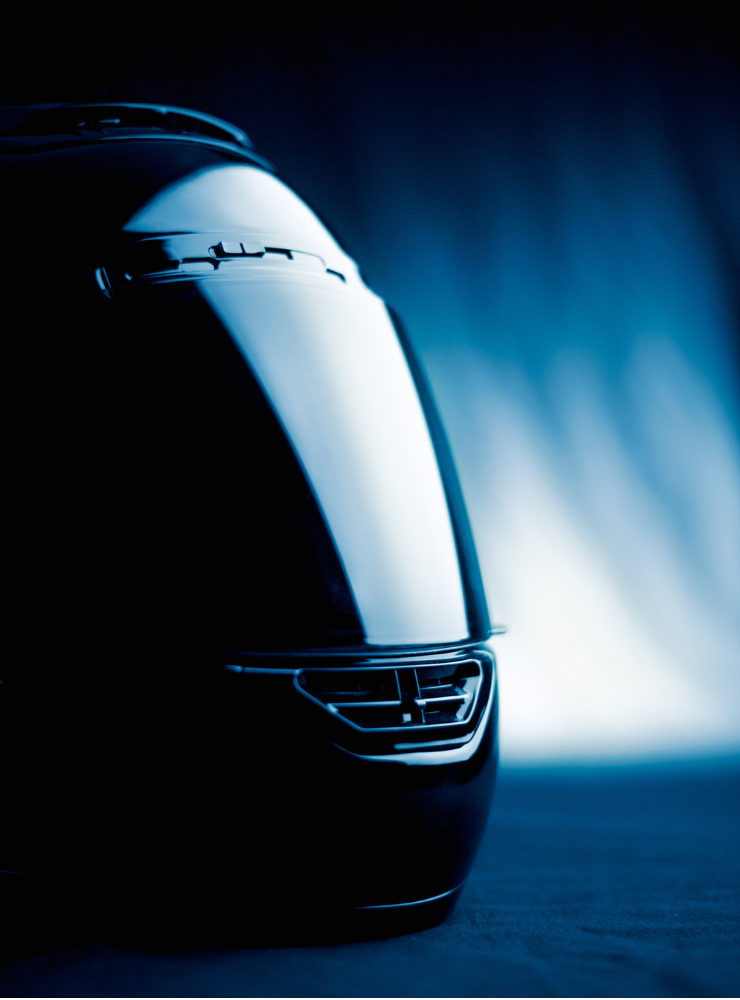How long are motorcycle helmets good for?
All things become old. They all have a short amount of time to exist. It means that they have a limited lifespan. It is, thus, necessary to replace them at some point. Many people question, “How long do motorcycle helmets last?” or “How often should we replace our motorcycle helmets?” In this article, we’ll discuss this topic in more detail.
The lifespan of the helmets
You should be aware that your helmet has a limited lifespan, and it’s a short one. Motorcycle helmets have a five-year lifespan, according to industry standards. As long as you haven’t ruined your life with an accident or a head injury. It’s time to throw it out if that happens.
For their motorcycle helmets, different manufacturers claim different lifespans. The response to this query depends on many other factors. Most of the time, this is because the production materials used by various motorcycle helmet manufacturers vary. But, the most important aspect in determining the lifespan of a motorcycle helmet is its use. Users of motorbike helmets use them in different ways. As a result of this, their lifespan can vary.

How long are motorcycle helmets good for?
There is no such thing as a ‘Use-by’ or “Best Before” date for motorcycle helmets. As a result, the question arises: How long are motorcycle helmets good for? As the helmets don’t have a fixed end date, users should replace them every three to five years. But, as required by the DOT FMVSS-218 Standard, they contain a “manufactured date” tag. A sticker under the comfort liner or padding indicates the helmet’s production date. The manufacturer suggested that you replace your helmet every seven years.
Note that all helmets produced after 1974 already have a production date on the back of the helmet. If the helmet does not have a production date stamped, it is already out of date. Manufacturers recommend replacing your motorbike helmet after five years of regular use.
Why should we replace our helmets?
You must be still wondering why we should change our helmet if it is in good condition. But, what will happen in five years? Will the helmet collapse to dust? I set out to find many reasons why we should update our helmets every five years. But, it seems sensible to replace your helmet after a decent number of years. But it also depends on many other factors.
Reasons for replacing a helmet:
First, how long has the person used the helmet, and how does he store it when not in use? It makes sense that the act of pulling a helmet onto your head. It is then pulling the chin straps straight. Then clipping it closed, followed by the process of removing all that when you remove your helmet. It can produce regular wear and tear. Besides, is that enough of a reason for you to throw away your helmet after only 3 or 5 years? The most common cause is that the various components of a helmet can start to degrade. Although this makes sense, if possible, you can change the degraded parts of the helmets.
- Chin straps:
It holds the helmet on the rider’s head. Chin straps are prone to wear and tear. You can replace this part if you don’t want to change your helmet.
- Comfort Liner:
On the ear part of the helmet, there is a foam layer. A cloth or leather comfort liner pad covers it. Unfortunately, the comfort liner will degrade and become loose. Replacing your comfort liner is the suggested solution.
- EPS Liner:
The complete form of EPS is: Expanded Polystyrene liner. It’s the part of the helmet that’s hidden under the shell. It provides a comfortable fit for the rider’s head. But the EPS liner will shrink due to the evaporation process and harden. So replacing your EPS Liner is the suggested solution.
- Inner Lining:
Sweat, hair, and body fluids can damage the internal linings. So, replacing it might be the solution.
- Outer Shell:
The outer shell prevents sharp objects that could cause injury to the skull.
- Air vents:
On the top of the skull, on the forehead, on the face shield, or on the chin bar, you will find air vents.
- Motorcycle Helmet Cheek Pads:
The cheek pads are on the helmet’s right and left sides. Depending on their outer shell, they can be of different sizes. They should be comfy and touch your cheeks.
- Helmet Face Shields and Visors:
This part protects the rider’s face and eyes while driving. Polycarbonate plastics make this part. The design can be transparent, colored, or tinted.
Also, you should be aware of the other parts of the motorcycle helmet. They are also important in the helmet inspection process.
- Base gasket
- Breath deflector
- Chinstrap
- Comfort liner
- Double “D” ring
- Eyeport gasket
- Impact absorbent liner
- Mouth vent
- Pro shield
- Rear vent
- Side plate
- Side vent
- Super vent
- Spoiler
Replacing a Helmet Because of a Defective Part
The broken part of the motorcycle helmet is already a sign to replace it. Here are some more reasons why you should replace your motorcycle helmet:
- The motorcycle helmet’s comfort padding has shown signs of poor quality or strength. Also, it became loose as a result of heavy use.
- There was a hit to your helmet.
- There are white scratches on the black paint areas.
- Synthetic foam padding that has become loose.
Degradation of a Helmet: How To Recognize It
Photo-oxidative degradation can destroy your helmet. The color of your helmet will start fading, most likely at the top. Photo-yellowing occurs if your helmet is of clear polycarbonate.
If the zone where you are living is prone to UV, you can expect the helmet shell to degrade more. But don’t confuse the UV levels with sunshine or temperature. Also, how often you wear your helmet and what time of the day are important factors to consider. Another factor is how you store it when not in use.

When to Replace Your Helmet Immediately
As your helmets don’t have an end date, you must consider the situations you must replace them. For example, you must replace your helmet if any of the following conditions occur:
- When your motorcycle helmet falls off
- It sweats too much as a result of regular use
- If the helmet has at least one defective part
- Finding out the material isn’t authentic
- As a result of accidents while wearing the helmet
Checking the safety of the helmet
Every few months or so, check your helmet to make sure the EPS liner is still attached to the outer shell. Ensure that the retention straps aren’t fraying or breaking down. Also, check that the clip system can stay closed when it should. The visor and the chin bar on your helmet should not be coming undone.
Check for chips and cracks on the outer shell. It would help if you replaced your cracked helmets immediately. Because even a tiny crack could cause serious head injuries if it opens during an accident.
Treat your helmet as if your life depended on it. It would be best if you kept it in your garage or outbuilding. Don’t forget to give it pride of place on a warm and dry shelf in your home! If you place it upside down, the cat may pee in it. Set it upright. Keep it out of the sun. Avoid leaving it in a warm car as well!
Protect your helmet by taking good care of it. With warm water and a soft cloth, clean the helmet from time to time with a gentle cleanser. Helmets are your best buddies, and they are always there for you. You never know when you’ll need it. Respect it.
Most of the time I removed the inner padding and comfort liner and washed in a washing machine. The information paper that came with your helmet has this information. You can also look it up on the internet. Removable and washable helmet padding is worth washing a couple of times a year. Replace the comfort liner after a few years, and the helmet will feel and look brand new.
Conclusion
A motorcycle helmet is a vital piece of gear to keep you safe. Even though it doesn’t guarantee your safety 100 percent, it does protect the head. It is the most important part of your body. That’s why knowing “How long are motorcycle helmets good for” is so important.
If you’re using your helmet once a week to ride to church, wipe it down with a cloth and store it in your closet. It could last for a decade. A couple of times mentioned that there are too many reasons to say that “everyone” must replace their helmet after five years. And if you’ve had your helmet for more than five years, you should buy a new one. If you want to be on the harmless part, replace your motorcycle helmet every five years. It’s important to replace your motorcycle helmet as soon as possible.
Related Posts

How Do Helmets Prevent Concussions

Which Type Of Helmet Will Be Best In 2023?








